The Summer 2015 issue of Harris Publications’ American Frontiersman magazine went on sale June 17th at newsstands across the United States and Canada. In this latest issue, Chris Noble and Joe Flowers learned from the one and only, Mors Kochanski. You will have to get the magazine to read what they discovered about this savant of survival.
For more information on American Frontiersman
and to purchase single copies of past issues,
please visit realworldsurvivor.com.
However, in partnership with Harris Publications, we are proud to offer you supplemental information to one of the magazine article’s sidebars. Specifically, “Mors Kochanski; At A Glance,” which outlines Kochanski’s works, inventions, and the skills he has promoted.
Below, American Frontiersman, Karamat Wilderness Ways, and Master Woodsman share in more detail a handful of the individual works of Mors Kochanski, many of them in Mors’ own words. His accomplishments will hopefully shed more light on his genius while offering you a chance to pick up some skills. And if you already own this latest American Frontiersman you know this is just the tip of the iceberg when it comes to Mors!
Special thanks and hats off to Mors and Diana Kochanski, Randy and Lori Breeuwsmwa of Karamat Wilderness Ways, and the folks at Harris Publications. You are simply the best!
MORS KOCHANSKI AT A GLANCE
(Survival knowledge that you are not likely to find elsewhere)
Inventions:
– The super shelter and its many forms
– The deluxe bush bed
– The flip-flop winch
– The parabolic single hole method in bow drill fire board
– The finger test for hypothermic incapacity
Promoting and developing Tom Roycraft’s work:
– Roycraft ski-shoe
– Roycraft pack frame
– Roycraft signal fire
– Roycraft survival scarf
– The jam knot lash with 550-200-7 parachute shroud line
– The parachute conical shelter with an interior open fire
Promoting and defining:
– The importance of clothing in survival
– The importance of sleep in survival
– The fires useful in survival
– Fire size, tinder and kindling defined
– The knots useful in survival including the constrictor and the cowboy bowline
– The use of fasting in survival
– The refinement of the construction and use of the open lean-to
– The use of the baton with knife operations
– The sharpening of knives
– Defining what is a ‘survival’ knife and ‘survival’ saw
– The use of the try stick in knife skills (from a Boy Scout tradition)
– The use of rope-making hooks
– The bush built bucksaw
– The safe use of the ax
THE SCIENCE BEHIND THE LEAN-TO (thermal mass)
As an aspiring instructor, it took Mors years to understand and apply the physics behind the open-fronted lean-to. There are many points that one must consider:
– The size of the warming fire and its distance from the edge of the bed.
– The distance between the back of the shelter and the fire (the inverse cube law).
– The depth of the shelter in winter and the slope of the roof to shed rain in the summer.
– How to make the back of the shelter impervious to the infiltration of cold by weighing down the bough cover with (rotten) wood or banking it with snow.
– The proper wind orientation to minimize problems with smoke from the warming fire.
– The use of thermal mass in lean-tos.
– The strategy of stoking the fire and supplementing body warmth through exercise.
– The longest lasting winter warming fire (between stokings).
Few survival manuals provide this depth of information on the construction and use of lean-tos. The videos below are a start, but you will find even more in the E-Book and Mors’ Bushcraft Shelters DVD.
THE DEVELOPMENT OF THE ‘SUPERSHELTER’
In the mid 60’s when Mors started to instruct, canvas and parachute material was in use and polyethylene sheeting was not yet available. Poly then replaced canvas but continued to be used as as a shelter cover as if it was canvas. While the straight-poled lean-to was in vogue, Mors became enamored of flexible wand-arch shelter construction (benders) because it could be made rigid, required only a knife to build, was free-standing to more effectively use the covering material, and did not need cordage in its construction. For years clear poly was used as a cover with the front facing the fire being left open as if it was as opaque as canvas. Mors experienced an epiphany when he saw someone completely cover the framework as if it were a greenhouse causing the cover to balloon with the pressure the of warm air that had developed within it. It was obvious that the warmth was being retained longer while sparks and smoke were kept out. If a mylar ‘survival blanket’ was used on the ceiling the whole length of the body was being warmed instead of just what was exposed to the radiance of the warming fire. In the early 70’s heavy snowfall and strong winds produced suitable drifting so that Inuit snow houses could easily be built. In studying the structure and construction of the domed snow shelter it occurred to Mors that many of its features could be imitated with mylar, poly and parachute fabric and the ‘super shelter’ began to evolve over a number of years. This form of shelter is a bubble with a highly reflective ceiling and no leaks as a finger hole in the upper part of the dome would drain any warm air as if it were smoke jetting out of a chimney. On the lee side of the bubble about 2 square meters or yards of porous para cloth provide for the exchange of fresh air. The sleeping bench within should be at least chair seat height when a warming fire is used. When using body heat or candles for warmth the bed should be so near the ceiling that you are almost touching it. The closer you are to the reflective mylar without touching it the better it functions when trying to maintain warmth with body heat alone. Wrapping yourself with it becomes a disaster when body moisture accumulates between it and your skin.
In the video below, Cody Lundin espouses some of the benefits of the Kochanski Supershelter in his Winter Wonderland class at the Aboriginal Living Skills School. Lundin is always quick to point out his mentors of which he references Mors frequently. See American Frontiersman where Lundin speaks of Mors’ influence on him.
https://youtu.be/szkggxXE7tE
The moveable version of this shelter can be dragged a few meters to downed fuel rather than sectioning it and transporting it to the shelter. Eventually a strategy can be developed where one can get by quite well without an ax or a saw in supplying firewood for the shelter. Learn more in Mors’ Bushcraft Shelters DVD and the Supershelter E-Book.
From the master himself…
https://youtu.be/NGSC8iYhC7k
THE (DELUXE) BUSH BED
The ideal bush bed should be about chair-seat high above the ground. The elevated bed is independent of the nature (unevenness) of the ground and provides some give at the hips. It can be leveled well enough to keep you from sliding off of it while sleeping. An evacuation stretcher can be built in much the same way. The crossbar at the knees shortens the span enough to allow the use of (finger-thick) sticks thin enough to provide some give at the hips. The bed structure framework can be made to provide the means to anchor the wands in a bender construction. Learn more in the Bushcraft Shelter DVD.
THE ROYCRAFT SKI-SHOE
The ski-shoe was developed by Tom Roycraft as a simpler and more dependable alternative to trying to imitate a regular snowshoe. The shoes require a very small amount of para cord for the jam knot lashings. There are many variations of the ski-shoe: the three meter long two-stick to travel over lake ice that might be deemed to be a little thin; the short one meter long 2 or 3 stick for crusty snow or traveling on a snowmobile track that does not support your weight; the standard 5 stick shoe of your height that is calculated to accommodate your weight plus your pack, plus how powdery the snow may be. As you can shuffle along with this ski-shoe rather than having to take distinct steps as with a snow shoe you tend to travel faster with less effort. The ski-shoe can be used as a sleeping platform or cut apart to provide sticks to make a shelter. A skilled person can re-lash a ski-shoe in about 15 minutes.
Suggested References
– The Two Kilogram Survival Kit Field Manual (also available in E-Book)
– Basic Wilderness Survival in Deep Snow (also available in E-Book)
– Sticks as Tools and Implements DVD
THE ROYCRAFT ‘A’ PACK FRAME
This pack frame is based on one used by Korean farmers to carry produce to market. It is built to accommodate the stature of the user and the load to be carried. It is also useful in towing a toboggan and other such applications as it is more effective pulling with the shoulders than using a rope around the waist. The pack frame is useful in stretcher evacuations when short of manpower as you can use your shoulders for carrying rather than your arms.
https://youtu.be/S4s_jaGIv88
THE ROYCRAFT SIGNAL FIRE
The Royal Canadian Air Force tradition was to use 50 feather sticks and a tripod platform. Tom Roycraft simplified the platform construction and substituted fine (spruce) twigs for the feather sticks. Learn more from Mors in the Bushcraft Fires DVD.
THE JAM KNOT
The jam knot used with 550 para cord produces a very tight lashing with a minimum length of cordage. It may possibly be one of the most useful knots in creation, let alone survival, because it can lash, bind and bundle with such crushing force. Learn more from the Top Seven Knots and the Use of the Windlass and the Bush Knots DVD.
THE FLIP-FLOP WINCH
Where there is a need for a human to apply an unusually powerful pull, non-elastic rope and two poles can provide it. The Spanish windlass was used when winter travel by horseback was common and where there was a need to cross lakes. An ax and appropriate rope might be enough to save a horse that has broken through the ice. A fence-post-sized upright stick (the drum pole) is held vertical with one hand and a thinner winding pole provides enough leverage to pull the horse on to the surface providing that the horse is strangled with a loose noose to make it more buoyant. Your power is limited by how long one can reach out using the winding pole (unless you have an assistant). The Spanish windlass needs practice to learn how to control its tendency for instability.
On the other extreme the Finnish windlass is much more stable because it uses a heavier horizontal drum pole with the heavy end on the ground and the smaller winding end supported at one’s height (or less) by a rail parallel to the ground. The length of the winding pole is limited by it’s need to clear the ground. Mors discerned that a winch between the two extremes was possible. The drum pole can be much longer and heavier than that of the Spanish windlass and the winding pole can be longer than either of the other two. For the greatest stability the drum log has to be so heavy that you can barely flop end for end. With each half-turn the drum pole is flipped or flopped back and forth. Care must be taken to use a strong non-elastic rope. If the rope should break and sweep your legs out from under you your concern is how much of an impression your face makes on the ground or how much of an impression the ground makes on your face.
See Top Seven Knots and the Use of the Windlass.
THE SURVIVAL SCARF
A ‘survival’ scarf can have many forms ranging from a meter long tube that can be pulled over the head and face to a bag that is about the extended elbows wide and slightly longer than you are tall. A mosquito net panel may be incorporated in one end. Half the scarf may be fluorescent orange for visibility and half camouflage for concealment. Around the neck the scarf can be equal to a wool sweater in improving one’s warmth. There are so many features that can be incorporated into this type of scarf that two different ones are recommended. They weigh little and take up a small space. Other uses:
– Mosquito head net
– Bathing suit
– A turban to protect head from sun or cold when sleeping
– Act as a quilt cover to hold insulation such as dry moss or grass
– A rucksack or bag with a pack frame or pack straps
– With a large balloon as a bladder to carry a prodigious amount of water or provide flotation when inflated, or be part of a rig to convert snow to water
– A strainer to remove debris from melted snow water
– Bandages
– Stretcher component
https://youtu.be/b2P1iGc8CVw
THE FINGER TEST FOR HYPOTHERMIA
https://youtu.be/yLObF_QIwP0
MORE FROM MORS
A survival knife should be a pry bar that can work wood very well. (It should be sturdy and capable of carving a netting shuttle in four minutes.)
A survival saw should help you fall a hug-sized tree.
A survival pot should be anodized black and have at least a seven cup capacity.
The items included in a survival kit must first fulfill two requirements: What contributes to your ability to sleep (that much better) and how it helps you to meet your water needs. Any spare space in a kit should be filled with para cord.
The best survival tarp is rip-stop nylon that is black on one side and very shiny on the other.
Ideal winter footwear should accommodate a thick mesh insole and three pairs of wool (preferably merino) socks. When all else fails to keep your feet warm, walk in your socks, especially when you break through the ice and fill your boots with water. In a few minutes the possibility of frozen feet is eliminated.
https://youtu.be/rIXvVemgEKA
The ideal survival fire is big enough to force you a step away, is made of logs as large as possible, no shorter than a half an arm span, no longer than one and a half arm spans (unless the logs are very straight), lying as parallel to each other as possible, with the spacing of all the logs being that of any finger. When short pieces evolve as the fire burns they will disarrange it; set them aside until there are enough to be placed end to end to take the place of a log.
Please note, in addition to the information already shared, you can always use the search function here on the Master Woodsman website to find even more on Kochanski, just search “Mors Kochanski” or click HERE.
FINAL THOUGHT…
“When you die, only three things will remain of you, since you will abandon all material things on the threshold of the Otherworld: what you have taught to others, what you have created with your hands, and how much love you have spread. So learn more and more in order to teach wise, long-lasting values. Work more and more to leave the world things of great beauty. And Love, love, love people around you for the light of Love heals everything.” — French Druid Triad, Francois Bourillon
As you likely gathered from reading American Frontiersman, Mors Kochanski is one of the most unique individuals on Earth. In our time, his influence in the field of Outdoor Living Skills is unparalleled — amazingly his generosity is of equal caliber. I and many many others will forever be thankful…
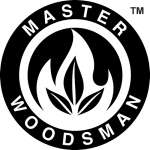

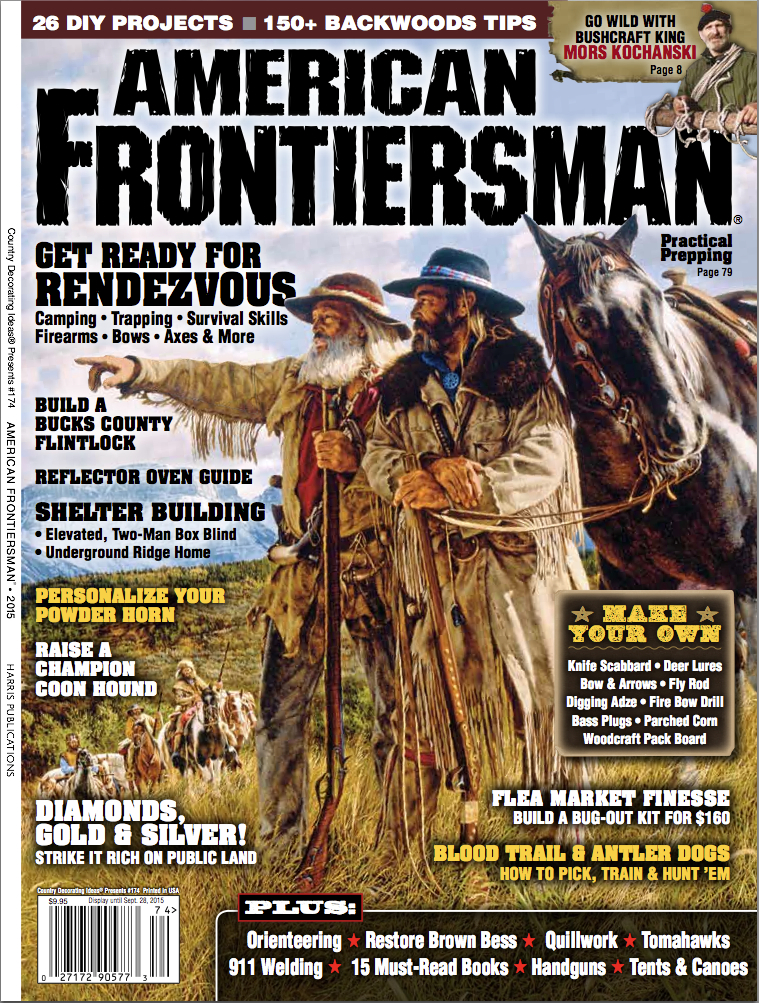
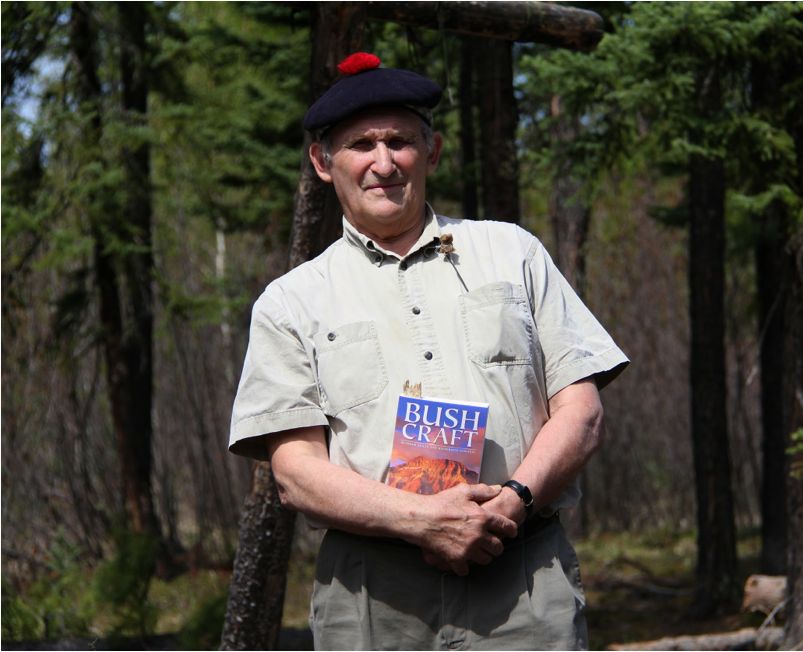
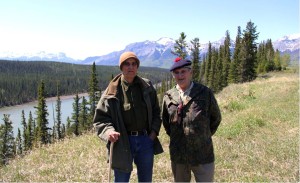
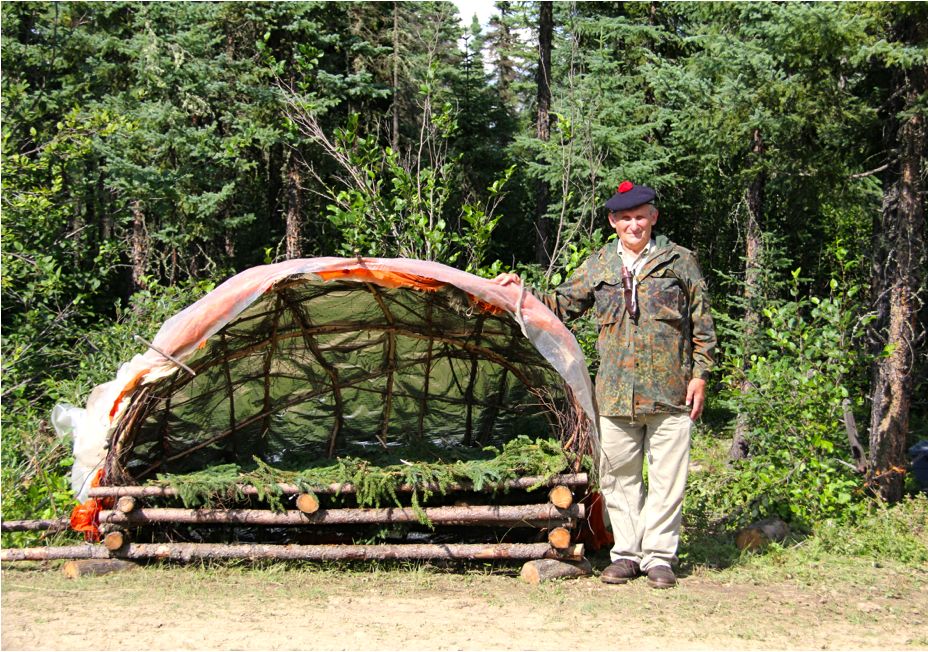
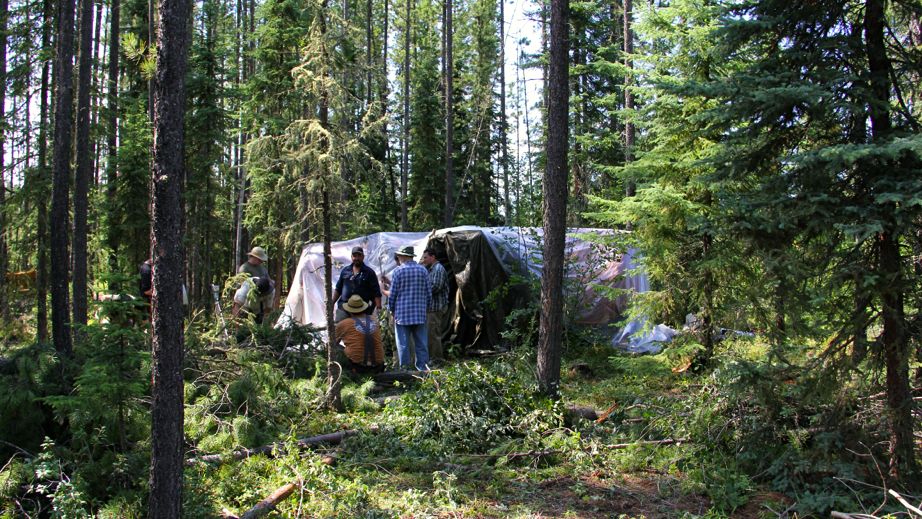
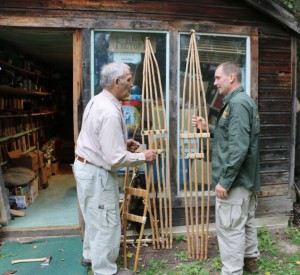

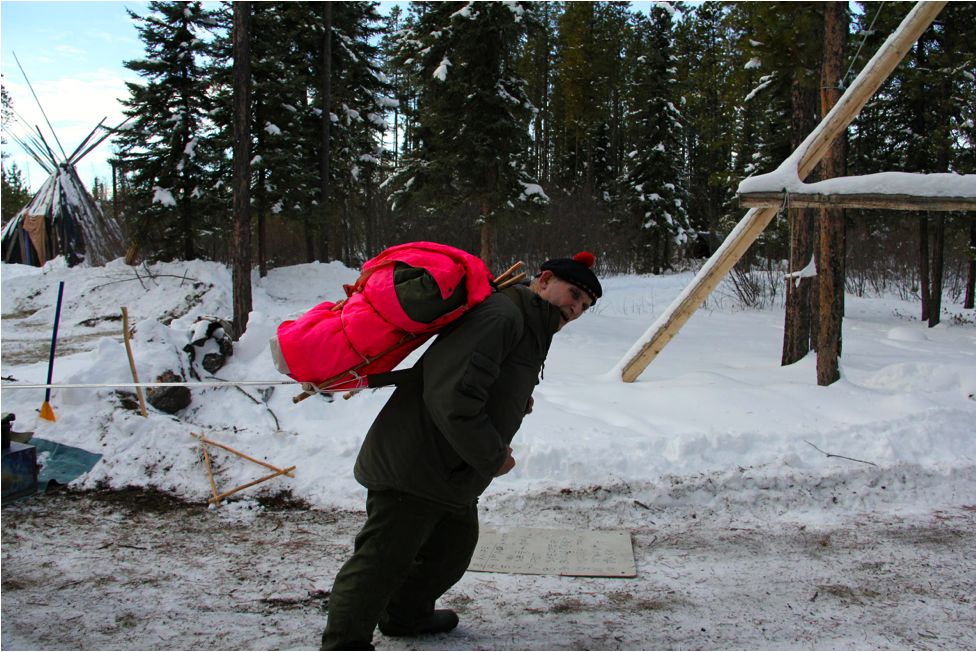
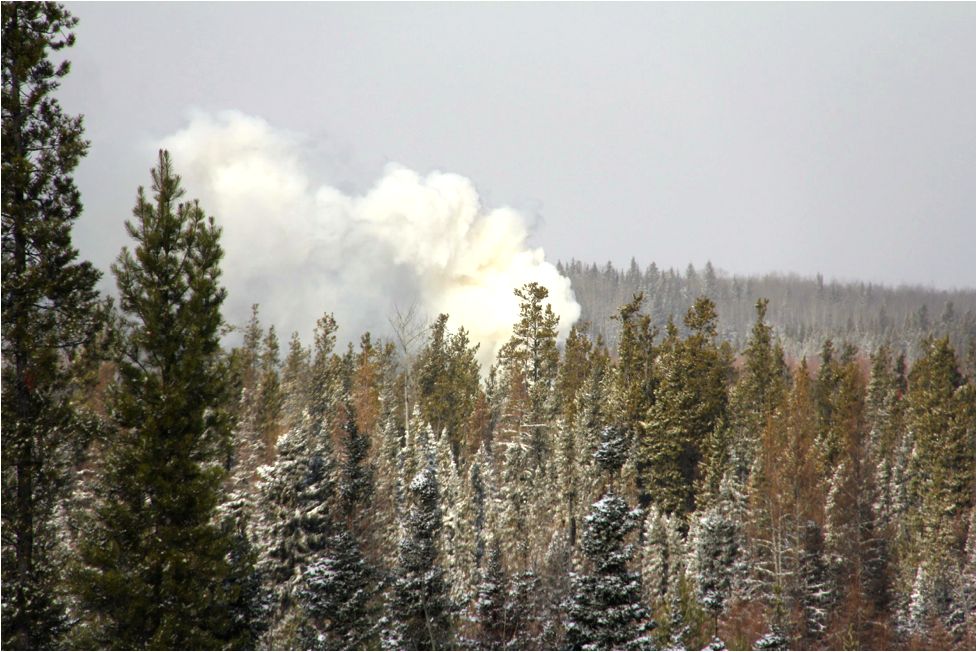
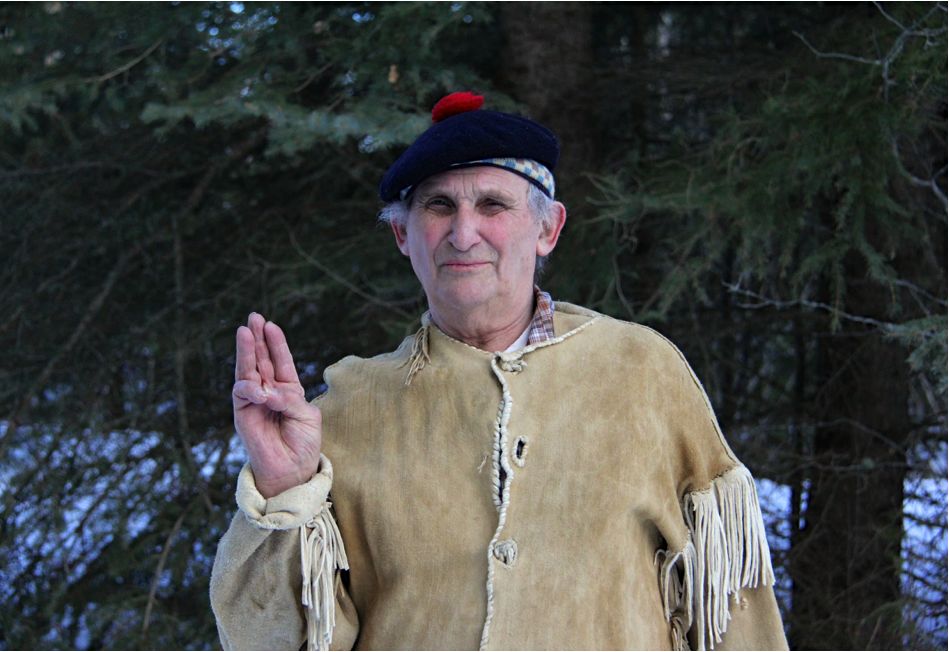
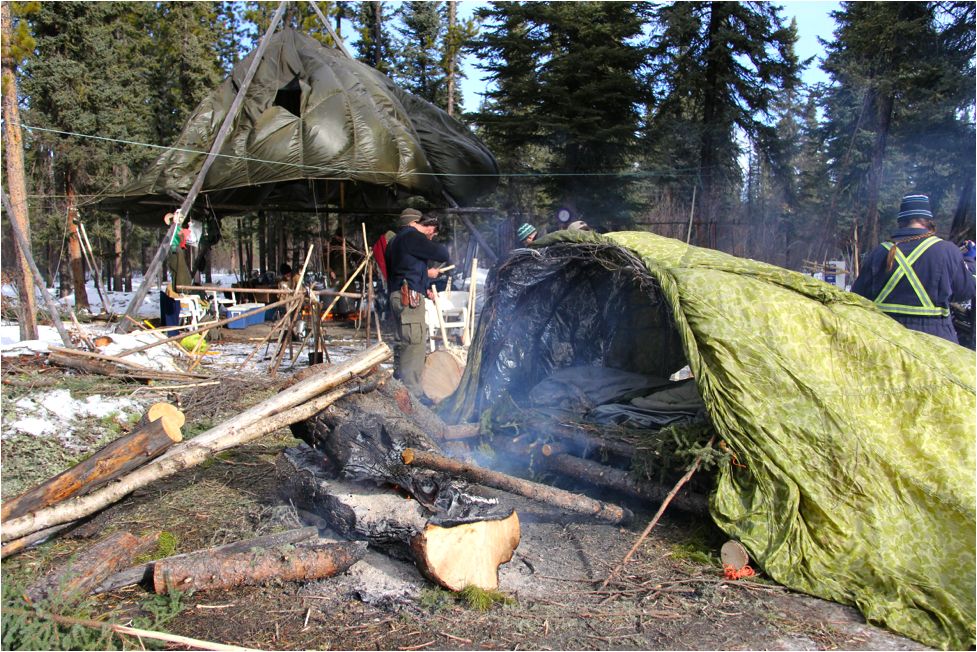

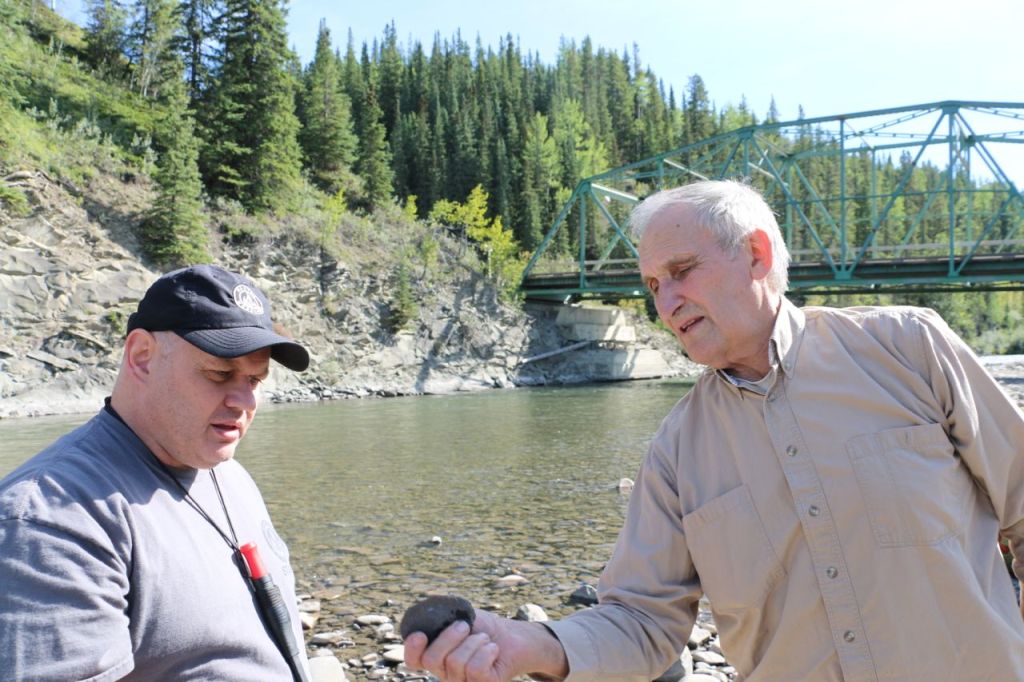

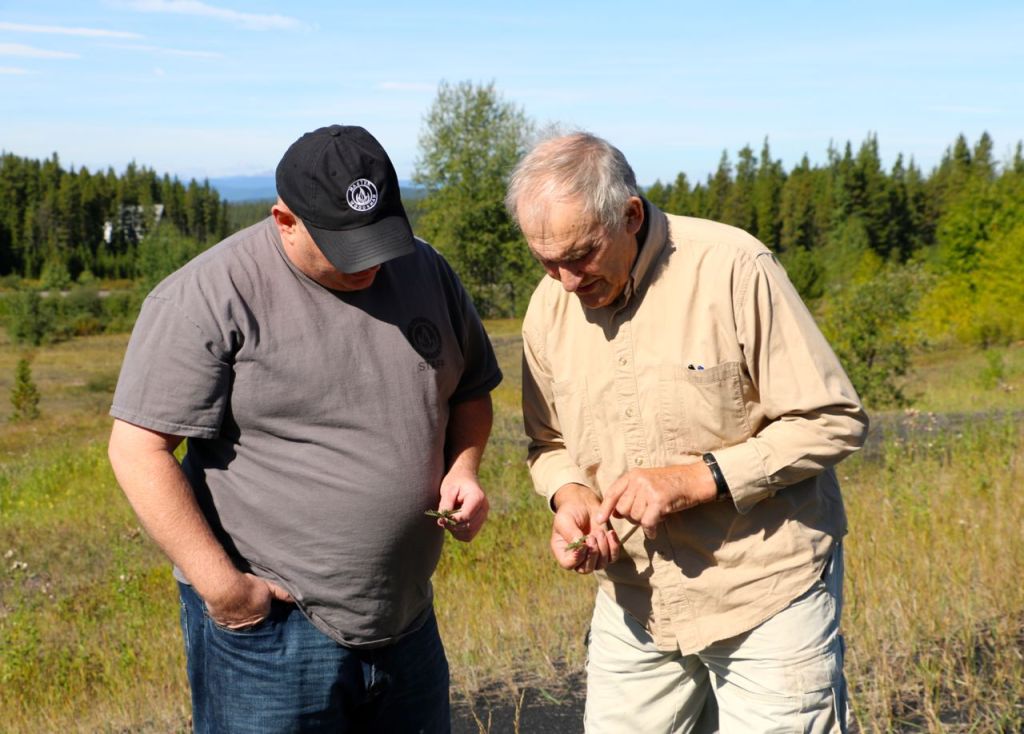
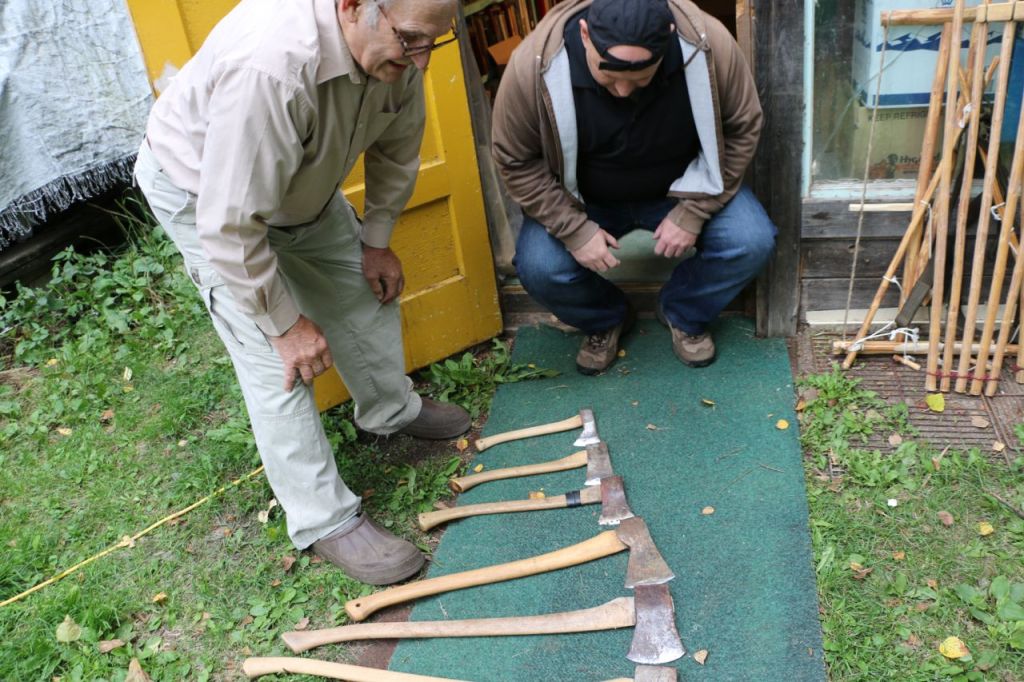
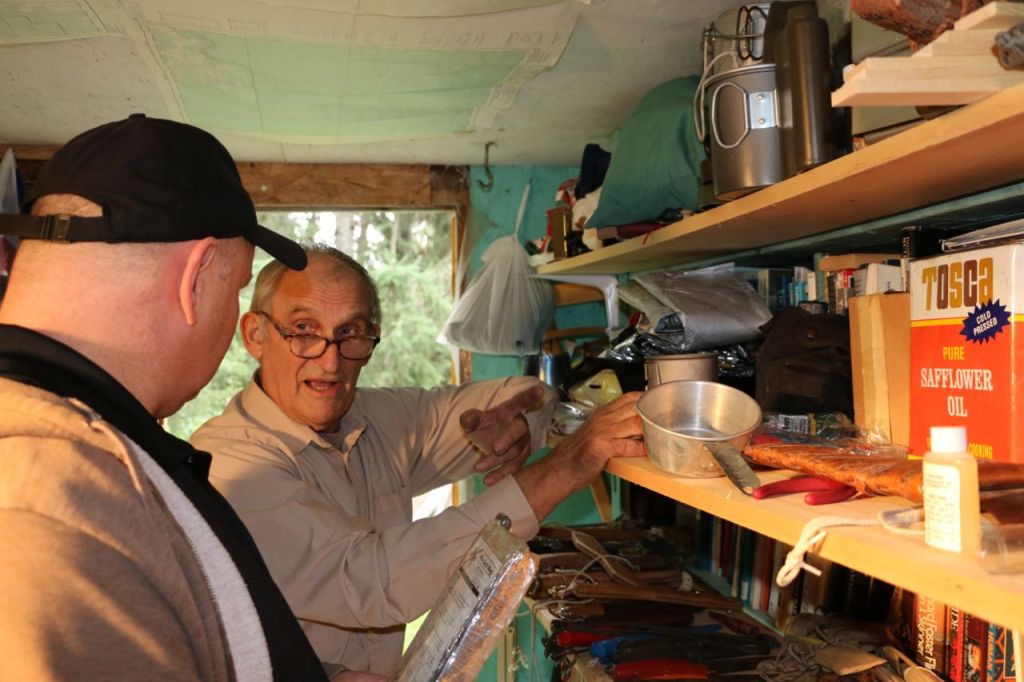
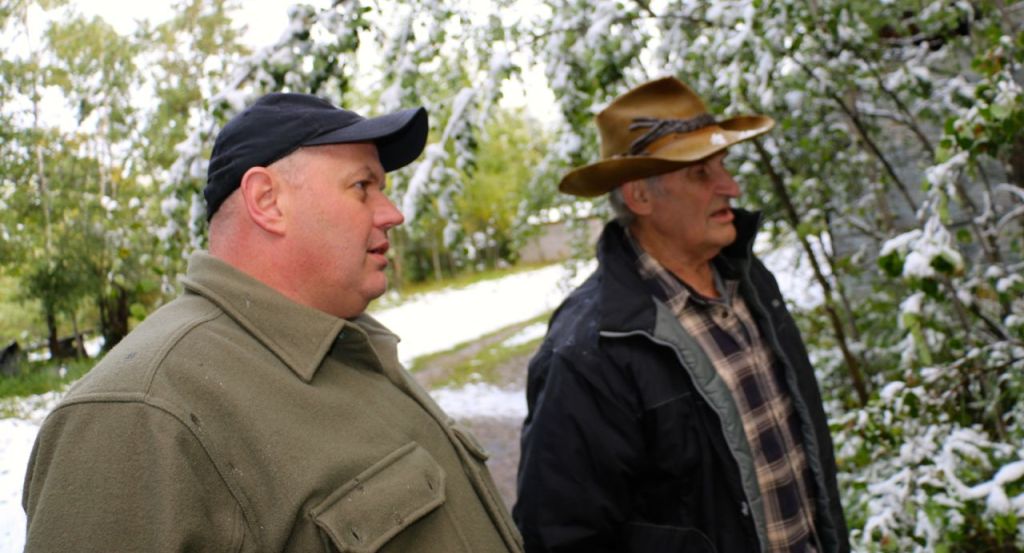
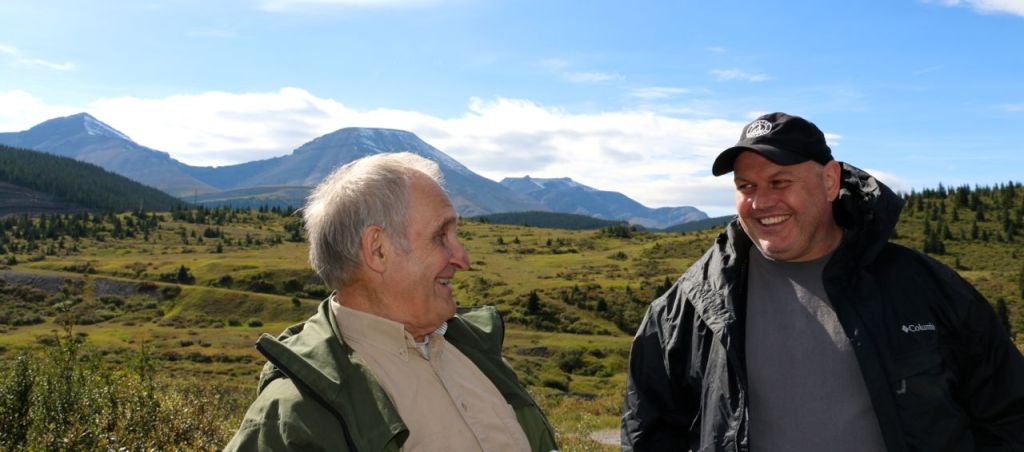
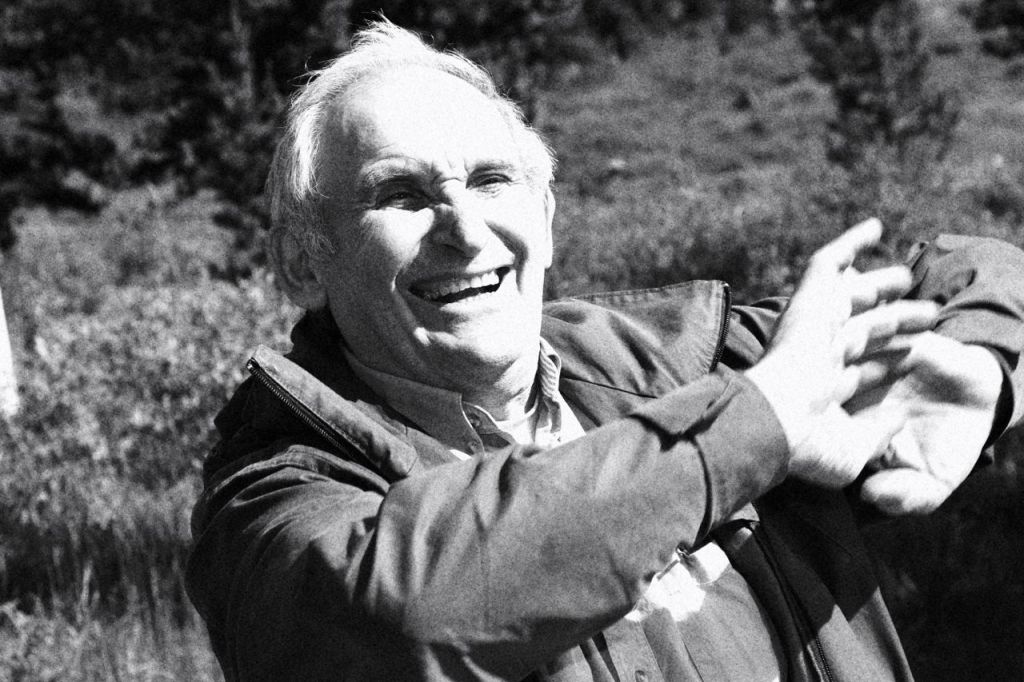
6 Responses to MORS KOCHANSKI in AMERICAN FRONTIERSMAN